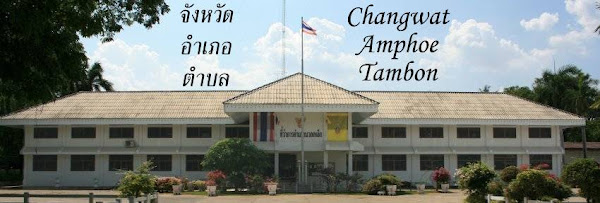- Creation of Non-hunting area Khao Phu Luang (เขตห้ามล่าสัตว์ป่าเขาภูหลวง) in Nakhon Ratchasima [Gazette], covering 232 km² of the forested hills around Lam Phra Loeng reservoir.
- Remove of about 0.5 km² of Bakdai subdistrict out of the area of the Huai Thap Than - Huai Samran wildlife sanctuary (เขตรักษาพันธุ์สัตว์ป่าห้วยทับทัน-ห้วยสำราญ).
- Declaration of Khao Khao (เขตที่ดินโบราณสถานเขาขาว) as a historical monument, protecting rock pantings on three hills in Ao Luek district, Krabi.
And while I was at it, I finally also found an Excel sheet with all the protected areas managed by the Department of National Park, Wildlife and Plant Conservation, most interestingly showing the internal codes used for these parks. Each of the class of protected areas has a number range, and is named in order of the creation of the park - but even though there is this simple numbering schema, the actual codes have been reworked twice already. The number ranges are
- 1xxx for 127 National Parks (อุทยานแห่งชาติ)
- 2xxx for 58 Wildlife Sanctuaries (เขตรักษาพันธุ์สัตว์ป่า)
- 3xxx for 67 Non-hunting areas (เขตห้ามล่าสัตว์ป่า)
- 4xxx for 110 Forest Parks (วนอุทยาน)
- 9xxx for areas about to be protected - 20 National Parks, 2 Wildlife Sanctuaries and 3 Non-Hunting areas.


